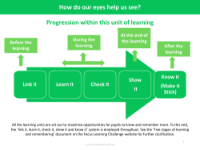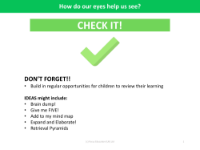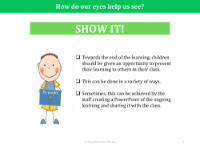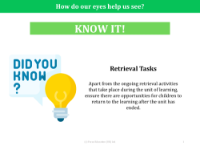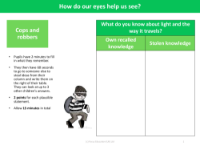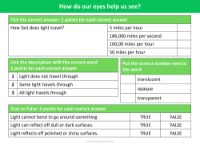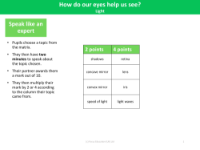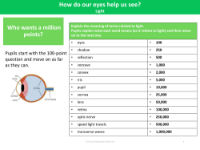How do our eyes help us see? - Number the parts of eye - Light - Year 6
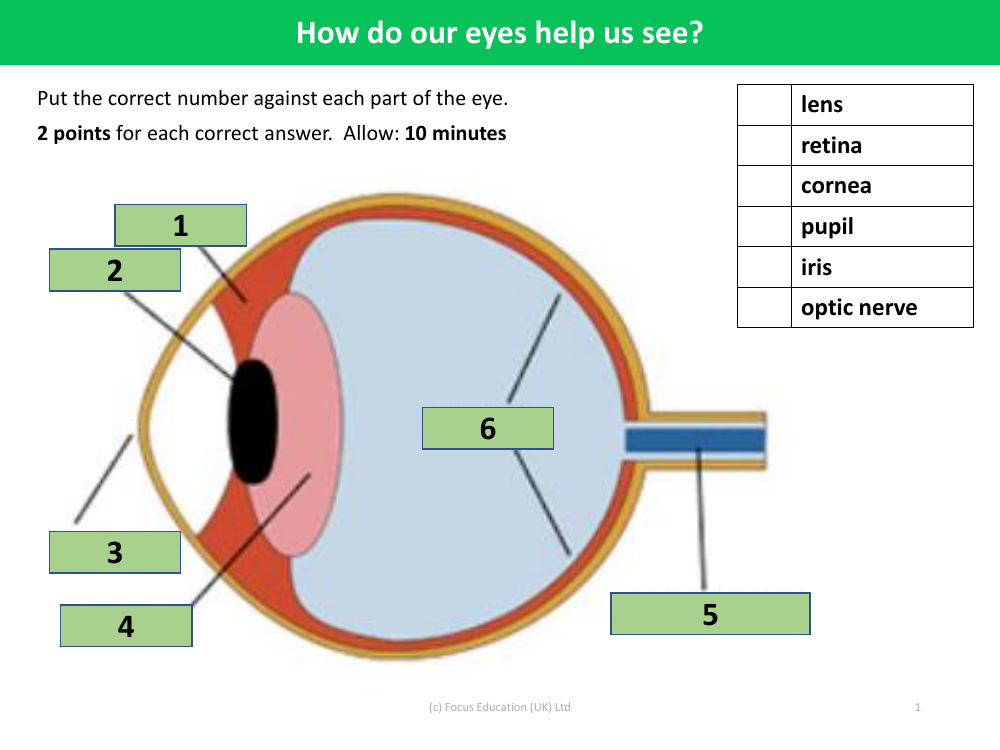
Science Resource Description
Our eyes are remarkable organs that enable us to see the world around us. They work by capturing light and converting it into electrical signals that the brain can interpret as images. Light first enters the eye through the cornea, which is the clear, dome-shaped surface that covers the front of the eye. The cornea helps to focus the incoming light. Behind the cornea is the iris, the coloured part of the eye, which has a central opening called the pupil. The pupil controls the amount of light that enters the eye by adjusting its size; it dilates in low light and contracts in bright light.
Once the light has passed through the pupil, it reaches the lens. The lens further focuses the light onto the retina, which is the light-sensitive layer of tissue at the back of the eye. The retina contains photoreceptor cells that detect light and convert it into electrical impulses. These impulses are sent to the brain through the optic nerve. The brain then processes these signals to create the images we see. In a classroom activity designed for Year 6 students, they would be tasked with matching the correct number to each part of the eye: lens, retina, cornea, pupil, iris, and optic nerve. This exercise not only helps in understanding the anatomy of the eye but also the function of each part in the process of vision.



